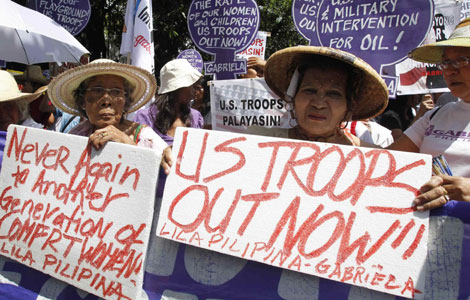 |
|
|
|
|||||||||||
The early spring of the Tibetan-inhabited areas of west China was calm and lively, until some horrifying news broke the peace. A couple of young Tibetans set themselves on fire, resulting in several deaths and serious injuries.
Watching the pictures of those young self-immolators, I was choked with sorrow beyond words. Some of them are barely grown-ups. They are supposed to read the scriptures in the monasteries, enjoy life under the plateau sunshine, and pursue their dreams of lives. But everything now ended in ashes.
It's not time for us to merely extend our condolences to the dead. We should look into these suicidal cases and dig out the root causes.
An interesting phenomenon drawing people's attention is the immediate propaganda of the Dalai Lama group after the self-immolations, accompanied by good-angled videos and well-prepared sensational statements. Is this purely a coincidence, or another master-minded case? As the investigation goes deeper, more facts show that the Dalai Lama group cannot keep their hands clean. The case of Rigzin Phuntsog may help explain everything.
Rigzin Phuntsog, a 16-year-old lama at the Kirti Monastery in Aba County is one of the victims. Investigations show that on the evening of March 15 of last year, Rigzin Phuntsog, accompanied by Lhadan, a lama in the monastery, bought three bottles of gasoline. Early on March 16, Rigzin Phuntsog told Lhadan and other lamas that he was ready and would set fire on himself on the day. In the afternoon, Rigzin Phuntsog set himself on fire after making sure that the lamas had finished reciting scriptures and many of them would be on the street, so that his self-immolation can draw enough public attention. After police on patrol put out the fire, a group of lamas from the Kirti Monastery took Rigzin Phuntsog away and held him for nearly 11 hours, regardless of his critical condition. After hours of negotiation, those lamas finally agreed to allow Rigzin Phuntsog to be sent to hospital. But it was too late. As a result of the delay, Rigzin Phuntsog died in hospital due to cardio-respiratory failure. The lamas involved were on suspicion of intentional homicide.
According to the confessions made by the lamas, they filmed the self-immolation and sent the images to Dharamsala right after the incident. As was often the case, shortly after a self-immolation occurred, pictures of the scenes and the victims were widely distributed by the Dalai Lama group.
Now it is clear that the self-immolations are nothing but staged scenes directed by the Dalai Lama group, serving their separatist motive and agenda. In any sense, self-immolation is violent, brutal and extreme, going against human nature, morality and tenets of Buddhism. Reasonable people won't endorse such behaviors. However, instead of condemning self-immolations, the Dalai Lama honored these innocent victims as heroes and martyrs, glorifying self-immolation as a non-violent means to seek the so-called justice and freedom. "He basically regards self-immolation as a courageous act, but just not a very smart one", as reported by a Hong Kong based media. The Dalai Lama, a sophisticated player of public relations meticulously advocating love and care, is too excited to hide his true sentiments,his cold-hearted words in relation to the incidents easily betrayed himself.
The Dalai Lama keeps on selling his non-violent pursuit of autonomy for Tibet within China, the so-called "Middle Way" policy. But I doubt whether the Dalai Lama and his followers understand the word "non-violent" correctly, if their non-violent means include self-immolations, attacking police officers, and even killing of the innocent as occurred in the 3•14 riot. "It is simply a joke to call the Dalai Lama a non-violent person." A German newspaper says so.
Not surprisingly, the Dalai Lama won't miss the chance to slander the human rights situation of Tibetans, exaggerating that the self-immolations showed the failure of the Chinese government's Tibetan policy. However, as a matter of fact I know, Tibetans are enjoying the fruits of reform and opening-up as well as preferential policies of the central government. Tibetans' average life expectancy has increased to 69 years old from 35.5 years old in 1951. Tibetan children enjoy free education, meals and lodging in schools. Most schools have Tibetan language classes daily. Farmers and herdsmen receive free medical care. Freedom of religion and normal religious activities are fully respected. One can smell the incense everywhere and see smiles of the people on the streets. What an irony that the Dalai Lama, the former biggest serfowner in Tibet who took human lives as straws in the old Tibet, now suddenly becomes a human rights defender caring about the Tibetans who are leading incomparably better lives than ever before.
Tibet is getting better with China getting stronger,which makes the Dalai Lama group's audience irreversibly shrink. The string of self-immolations revealed their desperate eagerness for the world's attention. However, their nasty schemes invited much more condemnations than sympathies. What's more, it helped people see clearly the Dalai Lama group's easy choice between human lives and political conspiracy. This time they may have outsmarted themselves, not even knowing that the self-immolators' flame may also cause backfire.
The author is a Beijing-based scholar of international relations.

|

|

|

|

|

|